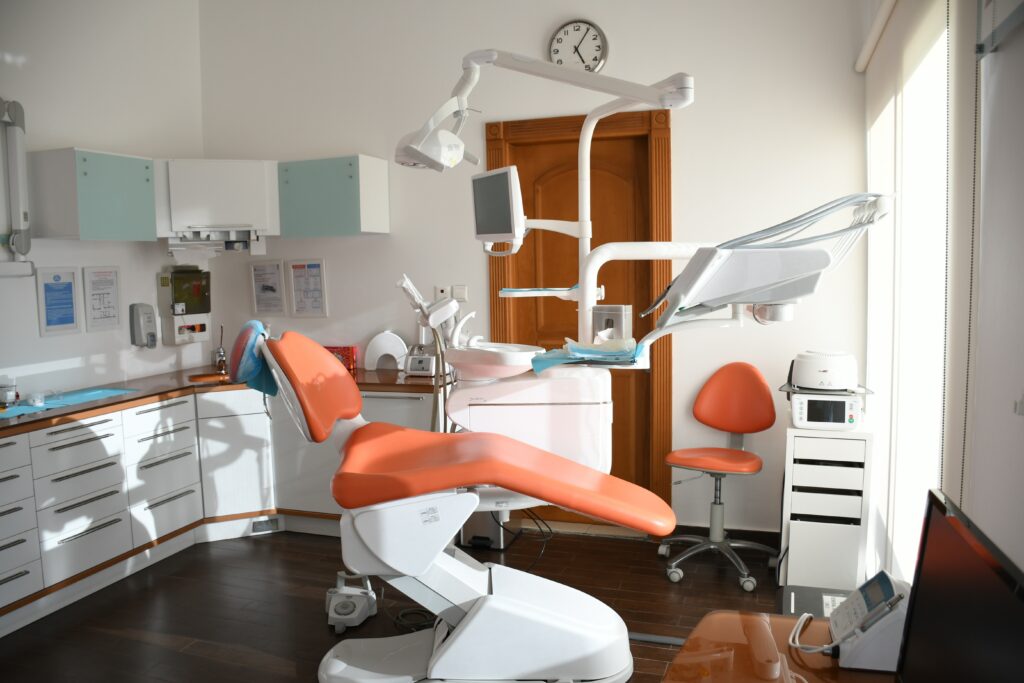Are Google Ads Worth it for Dentists?
Introduction
In today’s competitive dental industry, it’s essential to have a robust online presence to attract new patients and maintain existing ones. Google Ads, formerly known as Google AdWords, is an indispensable tool for dentists looking to increase their online visibility and drive more patients to their practice. In this article, we’ll discuss the benefits of Google Ads for dentists, the types of ads available, and how to create, manage, and optimize your campaigns for success.
Benefits of Google Ads for Dentists
Google Ads offers numerous benefits to dental practices, including:
- Targeted audience reach: By using specific keywords and location targeting, you can reach potential patients actively searching for dental services in your area.
- Improved online visibility: Google Ads allows your practice to appear on the first page of search results, increasing your chances of attracting new patients.
- Flexibility: You can adjust your budget and ad targeting to test and optimize your campaigns over time.
- Cost-effectiveness: You only pay when someone clicks on your ad, ensuring that you get a return on your investment.
Types of Google Ads for Dentists
There are several types of Google Ads suitable for dental practices:
Search Ads
Search ads appear on Google’s search results page when users search for keywords relevant to your practice. These ads are the most popular and effective for dental practices, as they target users actively searching for dental services.
Display Ads
Display ads appear on websites, apps, and YouTube videos that are part of Google’s Display Network. These ads use images or videos to create a visual impact and can help increase brand awareness for your dental practice.
Video Ads
Video ads are short videos that appear before or during YouTube content. They can be a powerful way to engage potential patients and showcase your practice’s services, staff, and facilities.
Creating a Successful Google Ads Campaign
To create an effective Google Ads campaign, follow these steps:
Step 1: Establish Your Campaign Goals
Identify Your Objectives
Determine the primary objectives of your Google Ads campaign, such as increasing new patient appointments, promoting specific treatments, or raising brand awareness.
Set Key Performance Indicators (KPIs)
Define measurable KPIs to help you evaluate the success of your campaign, such as the number of clicks, conversions, or the cost per conversion.
Step 2: Conduct Keyword Research
Brainstorm Potential Keywords
List down relevant keywords and phrases that potential patients may use when searching for dental services.
Use Keyword Research Tools
Utilize tools like Google Ads Keyword Planner and Google Trends to find high-performing keywords and analyze search volume, competition, and cost per click.
Group Keywords into Ad Groups
Organize related keywords into ad groups to create targeted ads for specific services or treatments.
Step 3: Set Up Your Google Ads Account
Create a Google Ads Account
Sign up for a Google Ads account using your Google account credentials.
Configure Billing Information
Add your billing details to ensure smooth processing of payments for your ad campaigns.
Step 4: Create Your Google Ads Campaign
Select Campaign Type
Choose the type of campaign (Search, Display, or Video) based on your goals and target audience.
Configure Campaign Settings
Adjust campaign settings, such as location targeting, language, and bidding strategy, to align with your objectives and budget.
Create Ad Groups
Set up ad groups for each set of related keywords to target specific services or treatments.
Step 5: Write Compelling Ad Copy
Craft Engaging Headlines and Descriptions
Create attention-grabbing headlines and informative descriptions that incorporate your target keywords and highlight the benefits of your dental services.
Include a Clear Call-to-Action (CTA)
Add a CTA that encourages potential patients to take action, such as scheduling an appointment or requesting a consultation.
Step 6: Optimize Landing Pages
Ensure Relevance to Ad Content
Make sure your landing pages are relevant to the ads and provide users with the information they need to take action.
Optimize for User Experience
Improve your website’s usability, load speed, and mobile responsiveness to provide a seamless experience for potential patients.
Step 7: Implement Conversion Tracking
Set Up Conversion Tracking in Google Ads
Configure conversion tracking to measure actions taken by users after clicking on your ads, such as filling out contact forms or scheduling appointments.
Integrate Google Analytics
Link your Google Analytics account with Google Ads to gain deeper insights into your campaign performance and user behavior.
Step 8: Monitor and Optimize Your Campaign
Analyze Campaign Performance
Regularly review your campaign’s performance, focusing on KPIs like clicks, conversions, and cost per conversion.
Adjust Keywords, Budget, and Targeting
Based on your analysis, make necessary adjustments to keywords, budget, and targeting to optimize your campaign results.
Test Ad Variations
Experiment with different headlines, descriptions, and ad extensions to find the combination that yields the best results.
Step 9: Evaluate and Measure Success
Monitor Key Metrics
Track the progress of your Google Ads campaign by analyzing metrics such as click-through rate (CTR), conversion rate, and return on ad spend (ROAS).
Review and Analyze Performance Reports
Regularly review performance reports in your Google Ads account to identify trends, areas of improvement, and opportunities for growth.
Step 10: Scale and Expand Your Campaigns
Identify High-Performing Ad Groups and Keywords
Focus on ad groups and keywords that deliver the best results and allocate more budget to them to maximize ROI.
Experiment with New Campaign Types
Consider exploring other campaign types, such as Display or Video campaigns, to reach a broader audience and diversify your marketing efforts.
Expand Your Targeting
Experiment with different demographic, geographic, and interest-based targeting options to reach new potential patients and increase your practice’s online visibility.
Step 11: Continuously Optimize Your Campaigns
Keep Your Keyword List Updated
Regularly review and update your keyword list to ensure you’re targeting the most relevant and effective keywords for your dental practice.
Optimize Bids and Budgets
Adjust bids and budgets based on campaign performance to ensure you’re spending efficiently and getting the most out of your ad spend.
Refresh Ad Copy and Landing Pages
Periodically update ad copy and landing pages to keep them fresh, engaging, and relevant to your target audience.
By following these detailed steps, you’ll be well on your way to creating and managing successful Google Ads campaigns for your dental practice. Remember, the key to success is continuous monitoring, optimization, and testing to maximize your return on investment and attract new patients to your practice.
Tracking and Measuring Campaign Success
To determine the effectiveness of your Google Ads campaign, it’s essential to track and measure its performance. Two key tools for this are:
Conversion Tracking
Conversion tracking allows you to measure the actions taken by users after clicking on your ad, such as filling out a contact form or scheduling an appointment. This data helps you understand which keywords and ads are driving the most conversions, enabling you to optimize your campaign for better results.
Google Analytics
Google Analytics provides detailed insights into your website’s traffic, user behavior, and the performance of your Google Ads campaigns. By integrating Google Analytics with your Google Ads account, you can gain valuable insights into your campaign’s ROI and make data-driven decisions to improve your strategy.
Tips for Effective Google Ads Management
- Regularly review and adjust your campaigns: Monitor your ad performance and make necessary adjustments to keywords, targeting, and budget to optimize results.
- Utilize ad extensions: Enhance your ads with additional information, such as links to specific pages on your website or your practice’s phone number, to increase engagement and conversions.
- A/B test ad variations: Test different headlines, descriptions, and ad extensions to determine which combination yields the best results.
- Schedule your ads: Run your ads during the days and hours when your target audience is most likely to search for dental services to maximize the impact of your campaigns.
Conclusion
Google Ads can be a powerful tool for dentists looking to increase their online visibility and attract new patients. By understanding the different ad types, setting clear goals, choosing the right keywords, creating compelling ad copy, and tracking campaign performance, you can create successful Google Ads campaigns that drive tangible results for your dental practice.
FAQs
How much should I spend on Google Ads for my dental practice? The budget for your Google Ads campaign depends on factors like competition, location, and desired results. Start with a modest budget and adjust based on your campaign’s performance and ROI.
How long does it take to see results from a Google Ads campaign? Results may vary, but you can typically start seeing an increase in website traffic and conversions within a few days or weeks of launching your campaign. You’re more likely to see fast results if you are working with a Google Ads Expert than if you are running the ads yourself and learning as you go.
What is the difference between Google Ads and SEO? Google Ads is a paid advertising platform that allows you to bid on keywords to display your ads in search results, while SEO (Search Engine Optimization) is the process of optimizing your website to rank organically in search results without paying for ads.
Can I target specific services or treatments with my Google Ads campaign? Yes, you can create ad groups for different services or treatments you offer and target relevant keywords to ensure your ads reach the right audience.
What is a good click-through rate (CTR) for dental Google Ads campaigns? A good CTR varies depending on factors like industry and competition, but a CTR of 2-5% is generally considered good for dental Google Ads campaigns. According to Wordstream’s healthcare advertising benchmarks, the average CTR for Google ads for dentists was 4.47% as of 2021.




